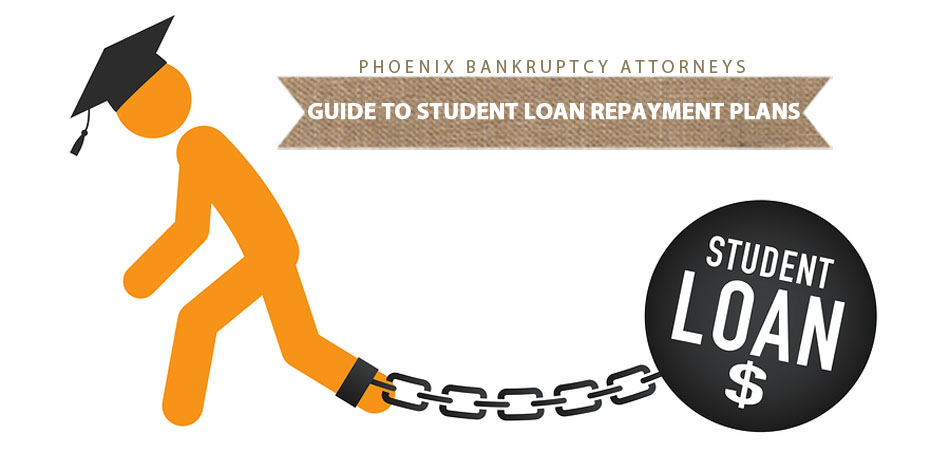The average student debt in our country is growing. Graduates in the class of 2014 had an average loan amount of just over $28,000, and they paid an average interest rate of 6 percent. The majority of college students borrow at least some amount of money to get through their education, and their debt rises if they attend a private or elite university.
Graduate students can borrow even more. The average doctor graduates with nearly $167,000 in debt, and the average lawyer graduates with at least $100,000 in debt (with the number getting closer to $200,000 for students attending the top schools).
Some people find that they are not able to keep up with their student loan payments after they graduate because their new salary is not proportional to their debt. They may have paid hundreds of thousands for a law or medical degree, but they may make a low five-figure salary right after graduation.
Some struggle to pay back their student loans, and they may either put off paying other bills to have the money for the student loan or just decide to stop paying the loan altogether. Here are a few things that will increase the chance that students will actually repay their loans, according to data from the National Bureau of Economic Research:
Increased Parental Income
Most parents contribute to their children’s education if they have the resources to do so. The higher their income, the more likely they are to contribute and the less students will have to borrow to fund their education themselves. The NBER data found that for every $10,000 increase in a parent’s salary, students took out about $250 in loans. That’s not a lot, but it can add up, especially when you factor in interest.
Level of Education
Students who only get a two-year education are more likely to default on their student loans than those who attend a four-year institution, according to the NBER data. Also, students who attended for-profit colleges such as online programs were more likely to default than those who attended traditional programs.
Parent education also seemed to have an impact. Students with mothers who did not go to college were found to borrow more (only about $1,500) and to still owe more after 10 years of payments. The reason for owing more was not specified, but it could have to do with taking job opportunities that pay less or not being as financially fit due to poor education on the topic.
Amount Borrowed
It may come as no surprise that the more a student borrows, the less likely that person is to repay the loan. However, it may be surprising how even small increments can have a big impact. The NBER data showed that just a $1,000 increase in the overall debt amount led to a 0.4 percent increase that the student would not pay. Every $10,000 increase in a graduate’s salary reduced that risk. Therefore, if borrowers wanted to minimize their risk of default, they could analyze a student’s expected salary based on major or stated career goals and compare it to the loan amount.
Other Findings
Though it could not name a reason for the finding, the NBER also reported that 10 years after graduating college, black borrowers still owed 51 percent of their loan, while Hispanics owed 22 percent, Asians owed 24 percent, and whites owed 16 percent. Systemic discrimination in hiring practices could be at the root of this issue since blacks may be making less in those 10 years. However, salary information was not provided, and researchers did not look further into the issue.
Understanding these and other issues surrounding student loan debt can help educational institutions and lenders create policies that are better for graduates who have to back that debt and the lenders who want to get it back. Making changes will also help the educational institutions increase enrollment if students know that they aren’t going to be overwhelmed by debt when they graduate.

Phoenix Bankruptcy Attorney can help you explore your options in Arizona. An experienced bankruptcy lawyer from our team will look at your financial situation and talk with you about your goals to make tailored recommendations for debt relief. You may be able to file Chapter 7 bankruptcy and discharge all your unsecured debts, such as credit card debts, or you may be able to file Chapter 13 bankruptcy to get a debt repayment plan. Call our firm today to talk with a Phoenix bankruptcy lawyer and learn more about how to proceed in Arizona.
Published By:
My AZ Lawyers
Mesa Location:
1731 West Baseline Rd., Suite #100
Mesa, AZ 85202
Office: (480) 448-9800
Glendale Location:
20325 N 51st Avenue Suite #134, Building 5
Glendale, AZ 85308
Office: (602) 509-0955
Tucson Location:
2 East Congress St., Suite #900-6A
Tucson, AZ 85701
Office: (520) 441-1450
Avondale Location:
12725 W. Indian School Rd., Ste E, #101
Avondale, AZ 85392
Office: (623) 399-4222
